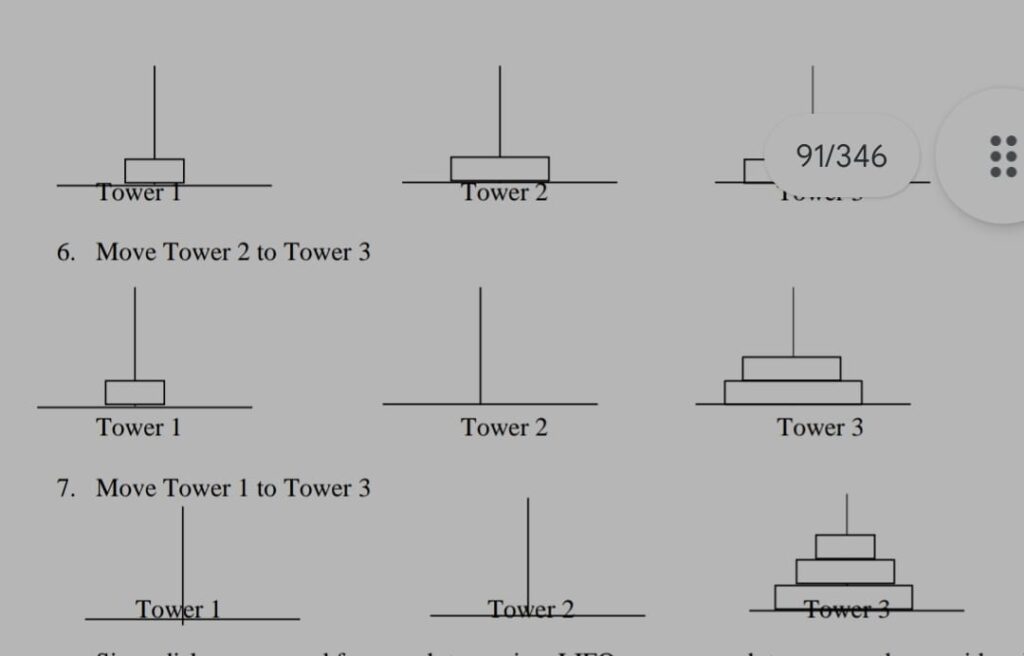Towers of Hanoi can be easily implemented using recursion. Objective of the problem is moving a collection of N disks of decreasing size from one pillar to another pillar. The movement of the disk is restricted by the following rules.
Rule 1 : Only one disk could be moved at a time.
Rule 2 : No larger disk could ever reside on a pillar on top of a smaller disk.
Rule 3 : A 3rd pillar could be used as an intermediate to store one or more disks, while they were being moved from source to destination.
Initial Setup of Tower of Hanoi
Tower 1 A

Tower 2 B

Tower 3 C

Recursive Solution
N – represents the number of disks.
Step 1. If N = 1, move the disk from A to C.
Step 2. If N = 2, move the 1st disk from A to B. Then move the 2nd disk from A to C, The move the 1st disk from B to C.
Step 3. If N = 3, Repeat the step (2) to more the first 2 disks from A to B using C as intermediate. Then the 3rd disk is moved from A to C. Then repeat the step (2) to move 2 disks from B to C using A as intermediate.
In general, to move N disks. Apply the recursive technique to move N – 1 disks from A to B using C as an intermediate. Then move the Nth disk from A to C. Then again apply the recursive technique to move N – 1 disks from B to C using A as an intermediate
Recursive Routine for Towers of Hanoi
void hanoi (int n, char s, char d, char i)
{
/* n no. of disks, s source, d destination i intermediate
*/ if (n = = 1)
{
print (s, d); return;
}
else
{
hanoi (n – 1, s, i, d); print (s, d)
hanoi (n-1, i, d, s); return;
}
}
Source Pillar Intermediate Pillar Destination Pillar
1 .Move Tower1 to Tower3

Tower 1

Tower 2

Tower 3
2.Move Tower1 to Tower2

Tower 1

Tower 2

Tower 3



3.Move Tower 3 to Tower 2
Tower 1 Tower 2 Tower 3
4.Move Tower 1 to Tower 3

Tower 1

Tower 2

Tower 3
5.Move Tower 2 to Tower 3

Since disks are moved from each tower in a LIFO manner, each tower may be considered as a Stack. Least Number of moves required solving the problem according to our algorithm is given by,
O(N)=O(N-1)+1+O(N-1) =2N-1
Other Courses
